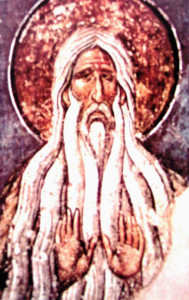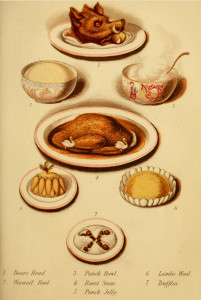NINTH DAY of CHRISTMAS:
St. Genevieve’s Day
There are no particular customs associated with this Ninth Day of Christmas, nor with the Tenth tomorrow. Today is the Feast Day of St. Genevieve, sacred to Paris. Tomorrow, more saints (St. Titus and St. Gregory, as well as St. Rigobert and St. Ramon). These two days are good days for contemplation, markedly different from the first half of the Twelve Days of Christmas. Chaos and major revelry were the order of the days of Christmas in the old year, but that’s because chaos reigned as the old year unraveled. Now, however, the new year is here… order is taking hold. Many of us who were off from work for Christmas return to work for the first time today. Ordinary Time is quickly sweeping Christmas into the closet.
Faithful readers of the Convivio Book of Days will hopefully be following tradition and keeping the tree up through the Epiphany celebration on January 6. Tradition tells us that this is the day the Magi arrived at the stable to see the child that was born. Here’s a suggestion from us to you for the day when you do indeed bring out your old tree: If you have a quiet corner of the yard where you can save it, save it. Use it, as we do, to fuel the midwinter fire at next year’s solstice night. This is a custom we’ve been following for years, and it is an honorable way of discarding the tree that brought you so much joy during Christmas. To have that tree bring you light on the darkest night of the year is a sublime connection as one year passes to another.
St. Genevieve, meanwhile, brings us back to light, as well. She is another of the midwinter saints associated with light. She is often depicted holding a candle. As the story goes: the devil would time and again blow out her candle as she went to pray at night. Genevieve, however, relit her candle without need of flint or fire. She is another of the light bearers in midwinter’s darkness. Thirteen days on the other side of the solstice, already light is increasing as we begin the journey toward summer’s warmth once more in the Northern Hemisphere. The light of St. Genevieve promises to never be snuffed by the darkness.
These two days are also good days for preparation. Twelfth Night and Epiphany, the days that close the Christmas season, are just around the corner: Twelfth Night on Thursday and Epiphany on Friday. If you are going to celebrate (and we hope you do), you’ll need some time to get things ready. Last year’s chapter of the Convivio Book of Days for the Tenth Day of Christmas provides our recipe for Three Kings Cakes. The recipe does indeed make three 8″ loaf cakes, one for each of the Magi: Caspar, Melchior, and Balthasar. Those Three Kings and la Befana, the kind Italian witch, the whole lot of them being the last of the midwinter gift bearers, will be making their rounds, too, on Twelfth Night. It is right and it is good that we welcome them into our homes and hearts.
One of the traditions that Seth brings to our Yuletide from his childhood memories are electric candles in all the windows. We put them up at the start of Advent and they stay up through to Candlemas, usually, at the start of February… which is when we begin to welcome spring.


